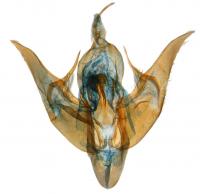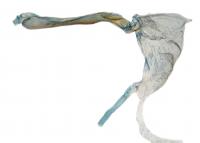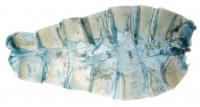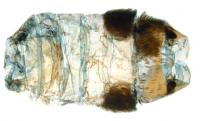|
Field Guide Descriptions: Covell (1984); Beadle and Leckie (2012) | Online Resources: MPG, BugGuide, iNaturalist, Google, BAMONA, GBIF, BOLD | Technical Description, Adults: Forbes (1954); Lafontaine (1998) | Technical Description, Immature Stages: Forbes (1954) | |
| Adult Markings: The collar is blackish. The ground color of the forewing is reddish and mottled. The costa is contrastingly pale, as are often the orbicular and reniform, with the cell in between usually blackish (Forbes, 1954). The hindwing is fuscous. |
| Wingspan: 35 mm (Forbes, 1954) |
| Adult Structural Features: Males have spining on the tibia. In the male valve, the ventral edge lacks the projection found in E. perattentus and the tips are not flexed downward. There is a distinct horizontal ridge in the basal area. The cornutus in the vesica is more distal and a tiny triangular shape. The distal tips of the juxta are noticeably flared and well sclerotized. In the female the lateral edges of the ostium are elongated with the distal halves crescent shaped and larger than in E. attenta. The pelt has additional lateral brush patches. |
| Structural photos |

Male reproductive structures |

Aedeagus |

Male abdominal pelt |

Female abdominal pelt |

Female reproductive structures |
|
| Adult ID Requirements: Identifiable from good quality photos of unworn specimens. |
| Immatures and Development: Larvae are similar to other cutworms (see Forbes, 1954, for a description). |
| Larvae ID Requirements: Identifiable only through rearing to adulthood. |